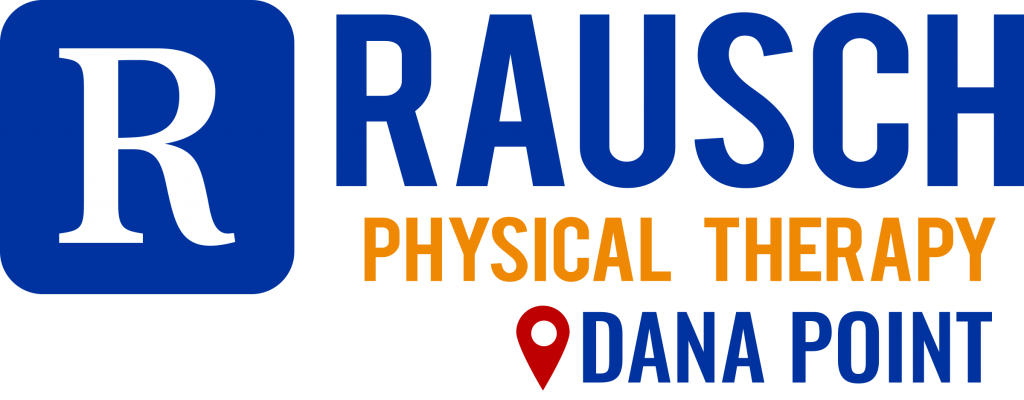Balancing a healthy diet and a consistent exercise routine can often feel like a complicated equation, but successful healthy living is truly about synergy, not sacrifice. The key to long-term,
An Overview of Tennis Elbow
June 17, 2021 6:14 pm / Category: Physical Therapy , Sports Performance , Wellness
Despite its name, “tennis elbow” does not solely occur in tennis players. In fact, it’s a very common issue to many athletes. Learn about how to identify the symptoms, diagnosis, and treatment options. With physical therapy, you can both treat your injury and learn how to keep it from happening again. Your Rausch physical therapist will be by your side throughout your entire treatment.
Despite its name, “tennis elbow”, or lateral epicondylitis, does not solely occur in tennis players. Tennis elbow is actually the most common condition seen in patients experiencing elbow pain and is thought to be due to small tears of the tendons that attach forearm muscles to the arm bone at the elbow joint.
The diagnosis of tennis elbow is made through a medical history and physical examination. Additional tests may be ordered to rule out other health conditions that cause lateral elbow pain.
Treatment of tennis elbow is conservative and usually involves rest, wearing a forearm brace, and taking an anti-inflammatory medication.
Most patients with tennis elbow are between the ages of 30 and 50 years old. Tennis elbow affects an equal number of men and women and occurs in the dominant arm in about 75% of people.
Causes
Tennis elbow occurs when there is a problem with the tendon (called the extensor carpi radialis brevis muscle tendon) that attaches to the outside part of the elbow bone called the lateral epicondyle, thus giving tennis elbow the medical name ‘lateral epicondylitis.’ This tendon is the attachment site of the muscle that functions to cock the wrist back (called wrist extension).
It’s important to note that the tennis elbow is not simply a tendon “inflammation.” Rather, as a result of repetitive use, experts believe that incompletely healed microscopic tears develop within the tendon.1 This leads to a degenerative (“wear and tear”) process and subsequent pain and tenderness felt at the outside of the elbow.
While tennis elbow may occur on its own, there are two groups of people that are especially vulnerable to developing this condition:
- Sports Participants: Athletes, especially racquet sport players, are prone to developing tennis elbow. About a third of amateur tennis players experience tennis elbow at some point in their careers. In addition to racquet sports, tennis elbow is seen in golfers, fencers, and other sports participants.
- Manual Laborers: People who work with their hands are at greater risk of developing tennis elbow. Jobs that may lead to tennis elbow include plumbers, painters, gardeners, and carpenters.
Besides activities that require repetitive gripping and grasping, trauma (in the form of a direct hit to the elbow which leads to tendon swelling) can also cause tennis elbow; although, this is a less common culprit.
Symptoms
The most common symptoms of tennis elbow are:
- An aching or burning pain over the outside of the elbow that is worsened by gripping or lifting
- Pain starts at the elbow but then may spread to the forearm
- Weak grip strength
The pain associated with the tennis elbow usually has a gradual onset, but it may also come on suddenly. Pain can be highly variable too, ranging from very mild to severe and debilitating.
Diagnosis
The diagnosis of tennis elbow is made through a medical history and physical examination. Additional tests may be ordered to rule out other conditions that cause elbow pain.
Besides tennis elbow, there are several other causes of pain over the outside of the elbow including instability of the joint, elbow arthritis, radial tunnel syndrome, and cervical radiculopathy. These conditions are generally considered if the symptoms are not typical for tennis elbow, or if a person with presumed tennis elbow does not respond to treatment.
Medical History and Physical Examination
In addition to inquiring about the characteristics of your elbow pain (e.g., location and severity), your doctor will ask you about any potential risk factors, like whether you have participated in a certain job or sports-related activities or experienced a recent elbow injury or trauma.
Your doctor will also ask you about your medical history, like whether you have a history of rheumatoid arthritis or elbow nerve entrapment.1
During the physical exam, your doctor will press on your elbow at various sites to evaluate for tenderness. With tennis elbow, there is usually tenderness about one centimeter from the lateral epicondyle itself.
Your doctor will also move (flex and extend) your wrist while your arm and elbow are held out to see if this increases or reproduces your pain.
Other Tests
Various tests may be used to diagnose some of the above conditions. For example, while an X-ray should be normal with a tennis elbow, it may reveal changes consistent with elbow arthritis.
Likewise, a magnetic resonance imaging (MRI) scan is also often normal, although in some individuals the affected tendon may show some abnormal changes. An MRI can also be useful for diagnosing radial tunnel syndrome
Other tests, such as nerve conduction study and electromyography (EMG), are sometimes conducted to rule out nerve compression.1 Blood tests may be utilized to help diagnose inflammatory conditions like rheumatoid arthritis.
When to See a Doctor
The following symptoms should be discussed with your doctor before initiating any treatment:
- Inability to carry objects or use your arm
- Elbow pain that occurs at night or while resting
- Elbow pain that persists beyond a few days
- Inability to straighten or flex your arm
- Swelling or significant bruising around the joint or arm
- Any other unusual symptoms
Treatment
Treatment of tennis elbow entails simple, non-surgical steps, and the good news is that with sufficient time, most individuals respond well.
Non-Surgical Therapies
For most people, one or more of the following treatments are effective for treating tennis elbow:
- Rest and Activity Modification: Stopping or significantly limiting activities that trigger and/or aggravate the condition (oftentimes for several weeks) is a key first step to healing.
- Medication: Under the guidance of your doctor, taking a nonsteroidal anti-inflammatory drug (NSAID), can ease inflammation and pain.
- Brace: Wearing a tennis elbow brace (a band worn over the back of your forearm muscle just below your elbow) can ease the stress on the tendon and muscle.
- Physical Therapy: Performing exercises that stretch and strengthen your forearm muscles, as well as various techniques like ice massage, heat, or ultrasound, can help improve muscle function and speed up healing.
- Steroid Injection: In certain cases, your doctor may opt to inject cortisone (a strong anti-inflammatory medication) into the area near your lateral epicondyle.
It is usually best to begin treatments in a stepwise fashion, advancing to the next treatment only if one fails to alleviate your symptoms. It is also important to remember that most patients take a few months from the onset of symptoms to the resolution of symptoms—it is rarely an overnight cure.
Surgery
A small percentage of patients diagnosed with tennis elbow will ultimately require surgical treatment. Generally speaking, patients may consider surgery if more conservative treatments are not effective after a period of six to 12 months.
A Word From Verywell
While “tennis elbow” or lateral epicondylitis is a painful and frustrating condition, be at ease knowing that you are not alone. This condition is common, and with proper time and treatment, the vast majority of people experience tendon healing and relief.
Reference: {https://www.verywellhealth.com/tennis-elbow-a2-2549917}
Performing exercises that address your forearm muscles can help speed up healing. At Rausch PT, our physical therapists can formulate a recovery plan to help get you back on track – and there’s no prescription needed to see a PT. Visit our Facebook page or call us at (949) 276-5401 to book an appointment.
If you find yourself in discomfort or think you could benefit from a personalized exercise plan, talk to a Physical Therapist.
Let’s talk! We are here to help. Give us a call for a complimentary assessment. Did you know there’s no prescription needed from a doctor to see us? (949) 276-5401






